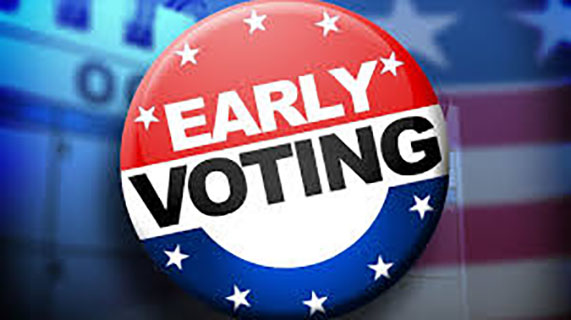Iowa voters are casting ballots in person or by mail at a record pace before the Nov. 3 election with several days of early voting still remaining.
The Iowa secretary of state’s office reported that 685,234 absentee ballots have been returned to county auditors statewide by Friday morning, just shy of the record set in 2012. Those include people who voted by mail or early in person at auditors’ offices or satellite voting locations.
While Democrats typically lead in early voting in Iowa, their advantage this year is significantly bigger than 2016 or 2012. About 51% of the ballots returned have come from registered Democrats compared to 31% from Republicans and 18% from those not belonging to either party.
That means President Donald Trump and U.S. Sen. Joni Ernst will likely need to overcome a six-figure vote deficit on Election Day, when many reliable Republican voters cast ballots.
Trump and Democrat Joe Biden are competing for the state’s six electoral votes while Ernst is seeking a second term against Democrat Theresa Greenfield. Both races are considered deadlocked and could help decide control of the White House and Senate.
The number of absentee votes has easily surpassed the 653,438 cast in 2016, despite a shorter window for early voting this year.
In 2017, Republicans who control the Iowa Legislature passed a law allowing for only 29 days of early voting instead of 40. This year, that period began Oct. 5.
The early vote count is expected to keep growing significantly in the coming days. More than 178,000 additional voters have been sent absentee ballots, and most of those are expected to be returned.
People can still request absentee ballots at an auditor’s office ahead of Saturday’s 5 p.m. deadline. Mail-in ballots must be postmarked by Nov. 2 and arrive by Nov. 9 in order to count.
In addition, voters can still show up and cast ballots at auditors’ offices or satellite voting locations up until Oct. 31. Iowa also allows for same-day voter registration on Election Day, when polling places will be open for 14 hours.
Overall turnout in the election could reach or exceed 1.6 million votes and the majority of those could be absentee. County auditors have been given permission to start processing the crush of absentee ballots on the Saturday before the election, two days earlier than usual.




